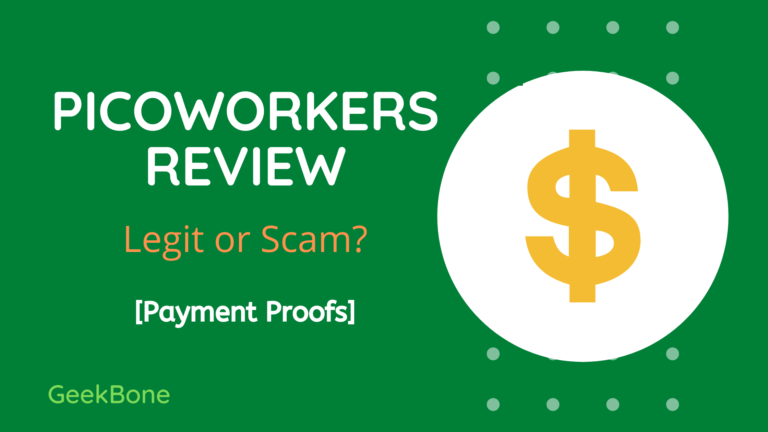6 Tips to Safeguard Yourself from Freelance Income’s Feast and Famine Cycle
When you’ve finally mustered the courage to relinquish your rigid 9-5 for something that’s more time flexible and less income-restricting, the first thing you should’ve considered is how it will alter your purchasing and saving patterns.
I left the corporate world at a tender age of 27. I felt shackled by the dominion of profit-centric officials, and eventually became fed up with my predictable lifestyle (i.e., work-home-sleep). My life was tedious, and I desired change.
I wasn’t quite surprised with how my income patterns have changed when I started freelancing. From being paid twice a month, I received payments via PayPal sometimes six times a week, or none at all. I somehow anticipated the income variations, but there are some elements I forgot to factor.
Voluntary income tax filing and social security contributions are just two adjustments I faced.
In freelancing, clients and profits can come in flocks, or like an oasis in the desert. With that in mind, below are six tips to get by freelancing income’s unpredictability.
1. Set up a contingency fund and replenish it monthly
Once you get that huge chunk of cash from your previous employer’s back pay, set up an emergency fund (ignore this if you already have). You’ll use this for unexpected expenses and when your freelance income has run dry.
This also covers immediate expenses vacated by delayed payments or non-payment at all.
Finally, this fund should also be enough to cover for transitional costs like personally paying for health insurance premiums, social security, and accounting fees – things you now have to pay on your own.
Be cautious in overspending when you’re earning abundantly. You’ll never when you’ll bump into a drought or slump.
2. Don’t let personal and business transactions overlap from the get-go
If you want to completely abstain from a bad habit, don’t start it.
For the first three months of my freelance writing, I was guilty of having a single bank account to house both my personal and business transactions. At times, I afforded webinars and purchased tracking and organizing apps with it.
The result?
It was absolute chaos for my accountant for it became hard for him to track my income sources, and recordable expenses. As a consequence, I was awarded fewer deductibles than what I could’ve had if I had two distinct bank accounts (since I failed to keep some receipts too).
The moral?
Register a business bank account with provisions for opening savings accounts. The former will pay and hold your freelance-related expenses and income, together with money you set aside for taxes and retirement.
Meanwhile, your savings accounts should be diversified as follows: tax savings, emergency savings, and retirement savings. These will hold the excess from your predetermined budget.
3. Forecast future monthly freelance incomes by analyzing past trends
It’s partly true – with the unpredictable and volatile nature of freelance jobs, it’s hard to predict what your future incomes will be.
The consolation is that while you can rarely identify the exact amount, you can predict whether it will fall on your convenient zone or not.
How?
Many freelancers utilize the technique of basing their household budgets on either their highest monthly business expenses or lowest income period.
It’s the safest way to get by since you’re being conservative and cautious at the same time. There’s a great certainty that you’ll at least hit your lowest income or break-even (recover) your freelancing costs.
4. Make subtle follow-ups on your past clients
As per HubSpot, “80% of sales require 5 follow-up phone calls after the meeting.”
The same rationale can be applied to freelancing since you sell services to people.
One-time transactions are rampant across the freelance industry. Because the talent and pricing pool is so diverse, past clients may not hire the same person in his next engagements.
It’s key to make lasting impressions with both your existing and past clients.
Fearing that they may have forgotten your impressive stint?
Worry less. Instead of sending a rudimentary “Thank you” message after you’ve amassed his PayPal payments, you can say:
“I’m entirely grateful for the work opportunity. I’m looking forward to furnishing more quality ________ (articles, designs, directory lists, links, etc.) for you in the future. I’ll make sure to keep in touch. I’m wishing success for your present and future endeavors!”
On special occasions like Christmas or Thanksgiving, or if you’re about to travel somewhere, send ex-clients your thoughts.
“Hi! My greetings to you this Yuletide season. I just hope you’re not overworking or stretching yourself too much this time of the year. Much love from me.”
By sending those kinds of messages, your clients in the past will remember the great work you’ve done for them (or the bad). It sounds casual and not desperate.
Composing a message too much of a burden? Then standardize it for all – they’ll never know. Just don’t forget to replace their names. I’ve had too many rehires just by doing this simple technique.
5. Shy away from unconscionable rates
As per Small Biz Trends, India constitutes about 40 percent of the globe’s freelance market, the second largest at more than 15 million.
I hold no grudge against those folks, but there are too many people who lowball the bidding in freelance job postings.
Some will even bid at less than the hirer’s initial offer, only to ace the competition in such an unfair way (e.g., $16 offer for a $20 project post).
But again, price determines quality. You can’t expect the best from something that is paid for less than half of its usual cost.
If you’re confident about your freelance skills, don’t lower your price. The worthy and capable hirer will come if you stay patient. You’ll need those extra bucks for days when you have nothing.
You may want to think twice about joining already-crowded sites like Freelancer and Up work. For informative purposes, consider less known freelance sites.
6. Only quote/accept projects on hourly rates if you desperately need the money and it’s the last resort
If you quote or accept freelance projects hourly, you’re rendering some free work for your client.
Time is money in freelancing, and every minute should be billed and paid.
Yes, every minute is still being paid on an hourly rate, but your per hour or per minute profitability sure goes down. That’s lost money you could’ve saved or used for contingency or leisure.
For instance, instead of accepting a three-hour, $100 writing gig, why not simply offer to remove the time?
You can say, “I can make an article of the same quality and caliber for $100, without hurting your deadline.”
That’s a huge bonus if you can do the article well for 2 hours. Instead of being paid $33.33 per hour for 3 hours, you can net $50 per hour for 2 hours. Your spare hour can be rather used for finding a new client or starting a new project.
Letting clients make you work on hourly rates give them the power to micromanage your time. Say if you’ve finished the article for 2.5 hours, he may ask you to do some editing or other tasks not explicitly stipulated in the agreement.
Quote on a project basis and let your skills determine the work duration.
As a wrap-up, freelancing can be a lucrative endeavor with proper financial management. If you can even invest your savings into low-risk instruments like government bonds, that’s a good passive income.
The key is to be conservative in abundance so you’ll have enough in famine.
Do you have additional tips in mind? Enlighten us below!





